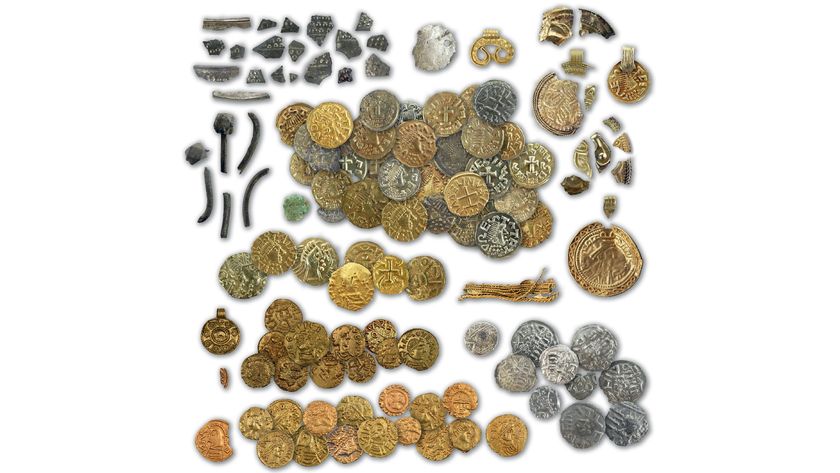5 Facts about the Wealthiest 1 Percent

Protesters in the Occupy Wall Street movement, which began in New York City's financial district and has since spread to hundreds of cities around the country, call themselves "the 99 percent": They say they're protesting on behalf of all but the wealthiest 1 percent of Americans.
The protesters object to corporate control of government policies, which they say has led to unfair tax loopholes, job outsourcing, cuts to public programs and gross overcompensation of executive employees, all of which have caused an ever-widening wealth disparity between the top 1 percent and the rest of the country.
So what is the disparity? How is wealth distributed in the United States?
FACT #1: The wealthiest 1 percent of households own 34.6 percent of all privately held wealth, and 42.7 percent of all financial wealth (total net worth minus the value of one's home).
Meanwhile, according to the NYU economist Edward Wolff a 2010 report, the bottom 80 percent of the population holds just 15 percent of the total wealth and only 7 percent of the total financial wealth (as a large portion of their wealth is tied up in their homes). The bottom 40 percent of Americans — that's 120 million people — hold just 0.3 percent of the wealth.
The wealth inequality is not solely because of the inheritance of "old money" among the wealthiest Americans; there is also an extreme and growing inequality in the distribution of incomes. While the top 1 percent of earners earned 12.8 percent of the total national income in 1982, their share rose to 21.3 percent in 2006, a level not seen since the Depression era. Today, an American in the top 1 percent takes in an average of $1.3 million per year, while the average American earns just $33,000 per year. [Wealth distribution pie chart]
FACT #2: The United States has more income and wealth inequality than most countries that have been studied, including India and China — countries that are traditionally viewed as having unequal distributions of wealth.
Sign up for the Live Science daily newsletter now
Get the world’s most fascinating discoveries delivered straight to your inbox.
The degree of income inequality in each country is assigned a "Gini coefficient" — a number that ranges from zero (if everyone in the country has the same income) to 1 (if one person in the country has all the income). According to data gathered by the Central Intelligence Agency for 2010, the United States has a Gini coefficient of 0.45, on par with such countries as Iran (0.44) and Mexico (0.48); this is higher than the Gini coefficients of 94 of the 134 countries that have been studied, including China (0.42) and India (0.37), and much higher than Canada, Australia and all of Europe. Sweden has the lowest Gini coefficient at 0.23.
The United States' Gini coefficient has been rising for decades; it was just 0.35 in the 1960s. [World map of Gini coefficients]
FACT #3: Among the 299 companies listed in the S&P 500 Index, the average CEO's compensation was $11.4 million in 2010, or 343 times more than the median pay ($33,190) of American workers. The ratio of CEO pay to median worker pay was just 42:1 in 1980, and is currently 25:1 in Europe.
According to the American Federation of Labor and Congress of Industrial Organizations (AFL-CIO), which tracks executive salaries on a website called Executive Paywatch, those 299 CEOs have a combined income of $3.4 billion per year, which could pay for 102,325 average American jobs.
Bill Domhoff, a sociologist at UC Santa Cruz, claims the ballooning of chief executives' salaries in recent years has resulted from the fact that, for the most part, they set their own wages. "If you wonder how such a large gap could develop, the proximate, or most immediate, factor involves the way in which CEOs now are able to rig things so that the board of directors, which they help select — and which includes some fellow CEOs on whose boards they sit — gives them the pay they want," Domhoff wrote in a 2011 article on his website. [Graph of worker vs. CEO salaries]
FACT #4: Between 1979 and 2005, the average after-tax income for the top 1 percent increased by 176 percent, compared with an increase of only 6 percent for the bottom 20 percent. Between 1990 and 2005, the purchasing power of the federal minimum wage actually declined by 9.3 percent when adjusted for inflation.
This rapid widening in the income gap between the rich and poor was identified in a 2007 report by the Center on Budget and Policy Priorities. The report attributed the trend to tax policies that favor the wealthy. According to Domhoff, other contributing factors include the diminishing political clout of labor unions and decreased expenditure on social services. [Graph of widening income gap]
FACT #5: Most Americans have no idea that the wealth distribution is as concentrated as it is, but regardless of their gender, age, income level or party affiliation, they believe wealth should be much more evenly distributed than they think it is.
In 2010, Michael Norton of Harvard Business School and behavioral economist Dan Ariely of Duke University surveyed 5,522 Americans about their views on the country's wealth distribution. They found that most respondents (regardless of their genders, ages, income levels and party affiliations) guessed that the top 20 percent of Americans hold about 60 percent of the wealth (rather than the 85 percent that they actually hold). Survey respondents also guessed that the bottom 40 percent hold between 8 and 10 percent of the wealth in the U.S. (rather than the 0.3 percent that they actually hold).
Perhaps even more striking than their misconceptions were their beliefs about the ideal wealth distribution. Survey respondents said that the ideal distribution would be one in which the top 20 percent owned between 30 and 40 percent of the total wealth, and that the bottom 40 percent should hold between 25 percent and 30 percent of the wealth — about 1,000 times more than the bottom 40 percent actually do hold. [Graph of actual, estimated and idea wealth distributions]
This article was provided by Life's Little Mysteries, a sister site to LiveScience. Follow us on Twitter @llmysteries, then join us on Facebook. Follow Natalie Wolchover on Twitter @nattyover.
Natalie Wolchover was a staff writer for Live Science from 2010 to 2012 and is currently a senior physics writer and editor for Quanta Magazine. She holds a bachelor's degree in physics from Tufts University and has studied physics at the University of California, Berkeley. Along with the staff of Quanta, Wolchover won the 2022 Pulitzer Prize for explanatory writing for her work on the building of the James Webb Space Telescope. Her work has also appeared in the The Best American Science and Nature Writing and The Best Writing on Mathematics, Nature, The New Yorker and Popular Science. She was the 2016 winner of the Evert Clark/Seth Payne Award, an annual prize for young science journalists, as well as the winner of the 2017 Science Communication Award for the American Institute of Physics.



